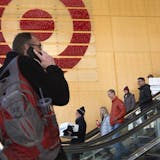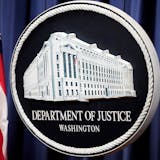A group of local civic leaders is seeking $2 million from the Metropolitan Council to study the possibility of a “hyperloop” vacuum tunnel that will whisk people between the Twin Cities and Rochester in just 15 minutes — a largely theoretical technology hyped a decade ago by entrepreneur Elon Musk.
Linking the Twin Cities and the Mayo Clinic in Rochester has long been a goal for public transit advocates, and some leaders in Minnesota think a hyperloop that travels faster than an airplane at 700 mph is worth exploring. Hyperloops are not in use as a mode of passenger transportation anywhere in the world, and naysayers contend the technology is unrealistic. A train between the two cities would make more sense, they say.
Global Wellness Connections, a nonprofit that counts the mayors of Edina and Plymouth and former Secretary of State Mark Ritchie as board members, is asking the Met Council for most of the $2.5 million needed for a feasibility study of a hyperloop between Minneapolis-St. Paul International Airport and Rochester International Airport, largely along Hwy. 52.
Executives from California-based HyperloopTT, which is working with Global Wellness Connections on the Minnesota grant, said they have yet to transport people on their test track in France.
“I don’t think that we should let things go unstudied just because nobody has done it,” said Bloomington City Manager Jamie Verbrugge, who submitted a letter of support for the study.
Another proponent of the study is Edina Mayor Jim Hovland, who chairs the Met Council committee that will vote on the grant application. He also serves on the Global Wellness Connections board as a volunteer member.
Hovland said he will recuse himself from the hyperloop discussion when it comes before the Met Council and notes that he does not have a financial interest in the effort.
“Let’s try to get some money to see if it makes any sense,” Hovland said. “If it were somehow to come to fruition, it’d be quite a pilot for the rest of the country.”



